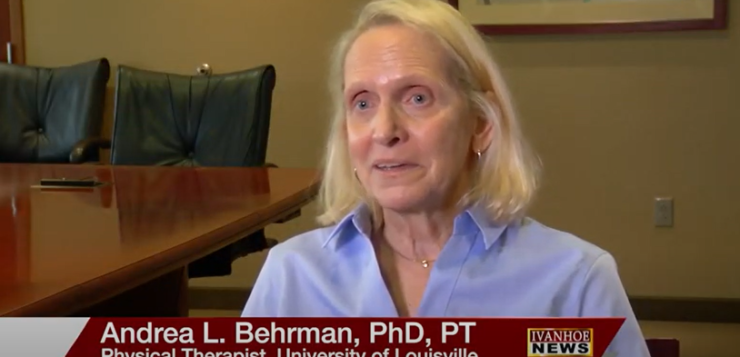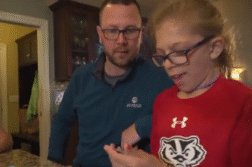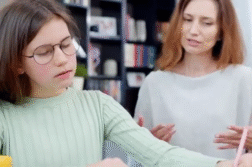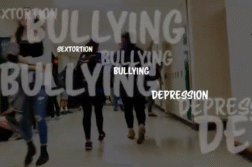Andrea Behrman, PhD, PT, a physical therapist and Director of the Kosair Charities Center for Pediatric NeuroRecovery at the University of Louisville talks about equipment specifically designed for children and therapy that works with a child’s developing neurological system to help them regain movement.
I wanted to start by asking you to talk a little bit about spinal injury in kids. How common is this?
BEHRMAN: Oh, it’s not designated as an orphan disease. That would be really rare. But there’re probably near fifteen hundred traumatic injuries per year in the US. But that’s a small population. What isn’t tracked very well is the number of nontraumatic injuries so from cancerous tumor, from an abscess, an infection, a virus. There’s something called acute flaccid myelitis right now, which is similar to polio. Those estimates aren’t out there. And that’s in a population all the way from 0 to 18 years of age.
Has there been in past years treatment options for kids? Are most kids treated like little adults? And does that work?
BEHRMAN: So, I would say that the basis behind what you do is similar. How you do it and how you deliver it is going to be different because they’re children. So, I can sit with an adult and have a conversation, rationalize this is what, why, etc. A child, even as you saw this morning, we’re engaging them in play. It’s age appropriate. But they target the goal we want. So, we may want them to reach, but we’re having them reach for things he wants. So, his own motivation is there to reach. And then we get the response we want in the environment we want. Just like we sing songs as we step or things like that to get rhythmical. Those children are very used to those. The wheels on the bus go round, you know, so all those types of songs we might use age appropriately. Teenager, we’d shift gears.
You and I were talking before. The conventional wisdom has been when there’s an injury, especially at the spinal column, the rest is just not going to come back. You and your colleagues have shown that’s not necessarily the case. And can you speak to that a little bit?
BEHRMAN: Sure. So basic scientists have been asking the question, ‘what’s the role of the spinal cord in controlling locomotion, walking and movement.’ Because we just thought it was a pipeline, that it’s just a conduit that carries signals, delivers them. That’s it. So, if you interrupt it, we’ve assumed you’re done. People for years have been trying to patch it back or build bridges between nerves, things like that, but it really hasn’t been as successful. So, without a treatment per se to change that, then the alternative has been, well, you’re going to live with this and how do we help you live? So, for pediatrics, I would use the word compensate, adapt, manage. But we’re not going to recover. We’re not going back to one day prior to your injury or how you would have developed. That is a look at our approach historically.
What are you and your colleagues here at U of L doing to help kids grow and adapt?
BEHRMAN: So, I would say now we’re trying to access this smart spinal cord to help children move below the injury level. So that’s what we’ve found out. The spinal cord actually is more than a conduit. It’s like a mini brain. Your brain is like a computer, right? It receives information, auditory, visual, all kinds, synthesizes, integrates, it gives it meaning. And then you have a will and intent to purposely move. The only thing the spinal cord is missing is that willful intent. But it can receive information, make decisions and generate movements. How does it do that? Well, it gets signals from the brain. That’s obvious to everyone. I’m telling you what to do. This is even right now I’m telling you what to do. This is the outcome. Another way the spinal cord works is from the periphery or sensory information. So, we’re actually feeding the spinal cord good sensory information. We often call it an ensemble of sensory information. So, the information makes sense. So, if I was going to walk, you and I know what walking looks like. But if I present something awkward in a way (for example, bent over looking at the the ground, using leg braces) that doesn’t look like walking, the spinal cord too will not recognize the movements. So, we’re trying to feed information to the spinal cord so it’s making sense and thus it would self-generate walking or postural control aspects based on that information.
Talk to me a little bit about what our viewers will see on camera, what looks like a pediatric treadmill. But I’m sure it’s a lot more. Can you explain the system and what you and your colleagues are doing?
BERHMAN: So, we call it either activity-based restorative therapy or locomotor training, kind of a misnomer because not every child walks from it. But we use a treadmill environment, a harness system to help unweight the child somewhat. Our goal is to actually reload him all the way. But in order to facilitate this right now, it unweights him so there’s a body weight support system. This treadmill was specially designed for children. You might have noticed it’s very narrow. It’s only 14 inches wide. The seats go low so a therapist who is six foot two can work with a child who’s 2 years old. So, we lower below the treadmill. It has a platform in front, so a therapist or a technician can engage with the child. And you saw much of that today. Because a child’s like, hey, what’s going on? What are we doing? I want to be engaged. I want to play. Their job is to play. Then the seats around them house the therapists or the technicians that are cueing or facilitating his legs, his trunk and even his arms. You saw the therapist work there. And so if you looked at him, you’d say, oh. That child’s walking on the treadmill. That’s the image you have visually, you and me. It’s the image the nervous system is also receiving. And we’re trying to feed it good information about what that looks like, feels like and then have the nervous system generate trunk control that I’m upright and that my legs are moving and to generate activity similar to that as well.
How long are most patients on there? How many times a week?
BERHMAN: So, it’s five days a week. We’re not casual about this. It has been a major insult to the nervous system. You can’t learn any skill, let’s take piano playing. No parent has their child take lessons once a week and practice once a week. They practice every day. This is an injured nervous system. It needs attention if you’re going to help it relearn something.
So, five days a week?
BERHMAN: It’s a one-and-a-half-hour physical therapy session, an hour on the treadmill. As you saw, it was stepping some, standing some, we’ll sit to stand, other activities. We’ve climbed stairs on there. We’ve had sword fights. I mean, there’s all kinds of things that can happen there. We come off the treadmill and use that time to take this activated nervous system through this intense period and see what it can do off the treadmill. And sometimes we’re sitting, so we’re trying to sit up. Sometimes we’re reaching for things. We’re going to stand up. We’re going to step, all kinds of activities that look more like what you would see at home. No child walks on the treadmill at home. So, we’re doing those activities to start to build a bridge to home.
So just to clarify for our viewers who may think, oh, they’re using the treadmill to reteach a child to walk. It’s more than that?
BERHMAN: Right. Not every child walks. In fact, there’s a low percentage of children that walk. There’s a high percentage right now of children that regain some aspect of trunk control. And if you couldn’t keep your head up or you were falling over and now you can do this, be upright in some way, you can start reaching for things, feed yourself, play with objects. But if you’re like this or weight bearing on your hands to hold yourself up, my hands can’t do anything. There’s so many things that happen on the treadmill that a child who could not be engaged in play suddenly can be, even using their imagination. So, all of a sudden, I can do with my arms. I’m freed up. And then we’re trying to activate that system so that beyond the treadmill, it will still work and function for them to do all the things children want to do.
How rare is what you have here at U of L? Is this the only system of its kind in the country or are you one of the very few?
BEHRMAN: We’re one of very few. And I often think there’s a sister program in the United States. There are people that are starting what we would call recovery-based programs. It’s very challenging when you have fifteen hundred children injured per year to geographically say every place can do this. As you say, it takes a lot of staff and personnel. There’s training involved. So, this isn’t something you read an article on. How you progress a child and make good clinical decisions is probably the hardest things that therapists do. But they’re doing it constantly throughout a session. It’s not we make a plan and follow that per day. A child’s going to present differently, and you instantly make a decision. What will help that child move forward? So like, what’s the rate limiting factor at this moment? How do I progress a child to do that?
Can we talk a little bit about Luke?
BEHRMAN: Sure.
Can you tell me what his injury is and how it occurred or where?
BEHRMAN: Well, I think everybody would like an answer to that, including the family. So, there’s not a conclusive answer right now. It could be that it was in the womb, at birth or after. There’s not a conclusive answer for the family. But they started noting differences around four months of age. And those differences propelled them to seek some medical advice. They looked at genetic testing and other things. And then finally, they scanned his head, his brain, scanned the spinal cord and determined that there had been some sort of injury.
Do you know at what point that like where on the spinal cord the injury was?
BEHRMAN: So, you know, so it’ll include the cervical area. I think there may be patches elsewhere in the spinal cord as well. So, you know, I was trying to get hold of the MRI to take a quick look. Just to tell you what’s interesting is, it doesn’t change how we treat them. So having a good MRI is important relative to trying to make a diagnosis, but we look at how he presents. Every child presents differently. You can’t read a book and say every child is going to follow this road map. And if you have a C5 injury, the next child with that injury doesn’t look the same.
If you could talk to me a little bit about his progression, your – you said when he first came, he was slouched over. He didn’t have the trunk control. Can you tell me a little bit about that?
BEHRMAN: He had a lot of what I would say are posturing. So, they’re positions that favored him. It was his trunk was curved. He sat on his sacrum so not up like this. His arms tended to be pulled in and his legs at times tended to go straight and crossed. OK, that’s challenging. And how does – can he move out of that? One of the things is, am I stuck there, or can I move out of it? He’d been seen I’m going to say traditionally, what’s traditional mean? A lot of bracing, stretching, something called developmental sequence. We put children in various positions, very little progress, and the prognosis for him was not positive. Like, I don’t think your child could even feed yourself. I don’t think your child is going to be able to stand or walk. So, when he came here, as I told the mother, we’re going to probably stand him up the first day. And she was just like, what? What? What? And right away we did that. He’s the youngest child we’ve had. I always think we could probably go down to 12 months or somewhere in the area where a child starts to cruise or take steps typically because we’re starting to weight bearing and do those similar activities. And we got his heels on the ground. That had never been done before. So, you just meet the child where he is every day. And I can’t tell his mother what the specific outcome is going to be. I’m pretty much going to tell her I think he’s going to get better. And improve in the limits of that? I don’t know. One of the advantages of this child is he’s so young in development, typically you have this neuroplasticity. You’re always changing and growing whether it’s your brain, your skills. Your whole nervous system is still learning and growing. And now we’re coming in and giving it what I would say is a more typical sensory motor experience in alignment with that. If I just sat him in a chair and put braces on, we’ve altered his experience even more. So, we’re trying to realign what typically happens in development with a type of therapy to activate his nervous system, starting at the spinal cord. And then hopefully also his brain because there are still some connections there, are going to tap into a more empowered and ready state of the spinal cord. So, it’s like enabling these signals to be used more appropriately. It’s like we’ve charged him up. He’s in a ready state.
Is there anything I didn’t ask you, doctor, that you would want to make sure that people know?
BEHRMAN: These children can actually get better. And I think it’s a new knowledge base and a new knowledge base with which to make clinical decisions for children. What I’m going to say is the traditional knowledge was based on what we knew at the time. So, we did the best with what we knew and made decisions there to help a child be more what people would say is functional, very practical. But it didn’t alter what I would call his neuromuscular capacity. And when you change his capacity, you open up the world to him. So, these things, I’m a physical therapist. Do you think everything I do is about physical aspects? It has implications for speech, for development of the child, emotional behavioral experience. Development is all about experience, and we’re opening up their world for more experience. It doesn’t mean that a child who sits in a wheelchair can’t have a good quality of life, but we can potentially change that life in front of them and give them multiple ways to experience a broader, more in-depth life with this program.
How long has this program been in existence? When did you start developing the treadmill system? And about how many kids have you worked with?
BEHRMAN: So, I have worked with adults for many years with spinal cord injury. I did a study at the University of Florida and happened to have a child walk for the first time after 16 months post-injury. And I thought, well. That was easy. We did another study and three out of six children walked. And I thought that was easy. But more importantly, every child improved their trunk control. And we did not even hypothesize that. I was like, that’s novel. That’s new. There’s a ton of people doing research in adults. I’m going to switch to children. The University of Louisville gave me the opportunity to come here and to extend their program. They have a basic science program working with adults. So, adding the pediatric neurorecovery program gave us the whole age spectrum that and the Kosair Charities here in Louisville helped launch this. UofL and Kosair Charities thus together in 2012 supported the development of the pediatric clinic. It took us about two years to get the clinic going. And then we started to parallel that with the research arm. It’s very important. You have to do the research and then fast track it into practice. That’s what is offered here because I’m a University of Louisville employee working in a U of L health care system. So, I run a clinic as well as the research arm. We probably have over a hundred children we’ve seen. You might say, well, that seems small. But when you look at the scope of things, we see those children back every year. So, we see them time and again. It’s not just a program that you come to for three months. Because your size changes, your brain changes, your ability to participate changes in some ways. You’re a teenager. So, we’ve had a child that we’ve followed here since he was 4. And now he’s at 12 years, 16. The family comes from another state here and has come every summer. So we follow children across time. We’ve had five families now move here just because of the medical care their child can receive and the rehabilitation is pointing at recovery. And that extends beyond physical therapy to bladder care, to bone health, other aspects of their life.
Interview conducted by Ivanhoe Broadcast News.
END OF INTERVIEW
This information is intended for additional research purposes only. It is not to be used as a prescription or advice from Ivanhoe Broadcast News, Inc. or any medical professional interviewed. Ivanhoe Broadcast News, Inc. assumes no responsibility for the depth or accuracy of physician statements. Procedures or medicines apply to different people and medical factors; always consult your physician on medical matters.
If you would like more information, please contact:
Andrea L. Behrman, PhD, PT
Physical Therapist and Director, Kosair Charities Center for Pediatric NeuroRecovery
University of Louisville
Sign up for a free weekly e-mail on Medical Breakthroughs called First to Know by clicking here




